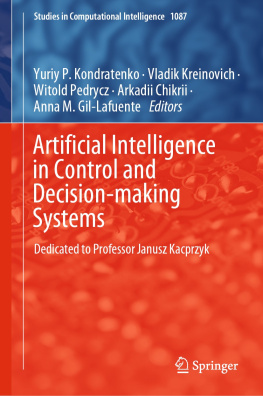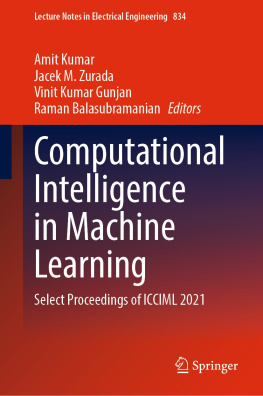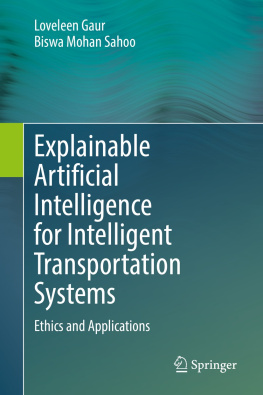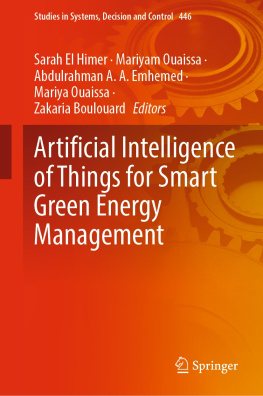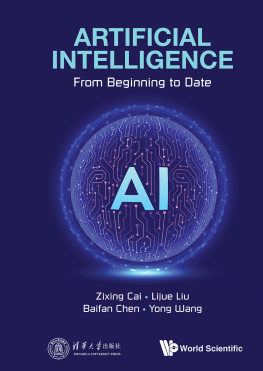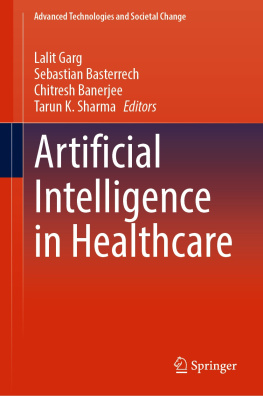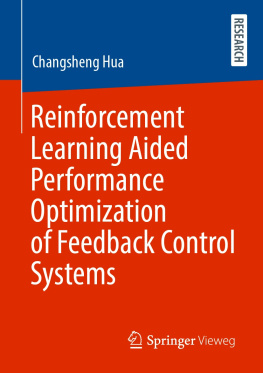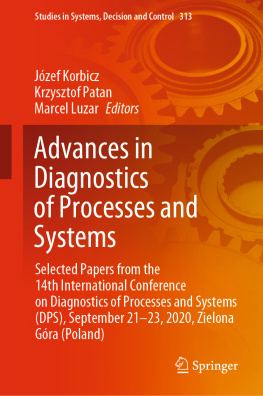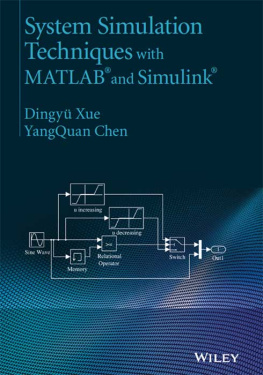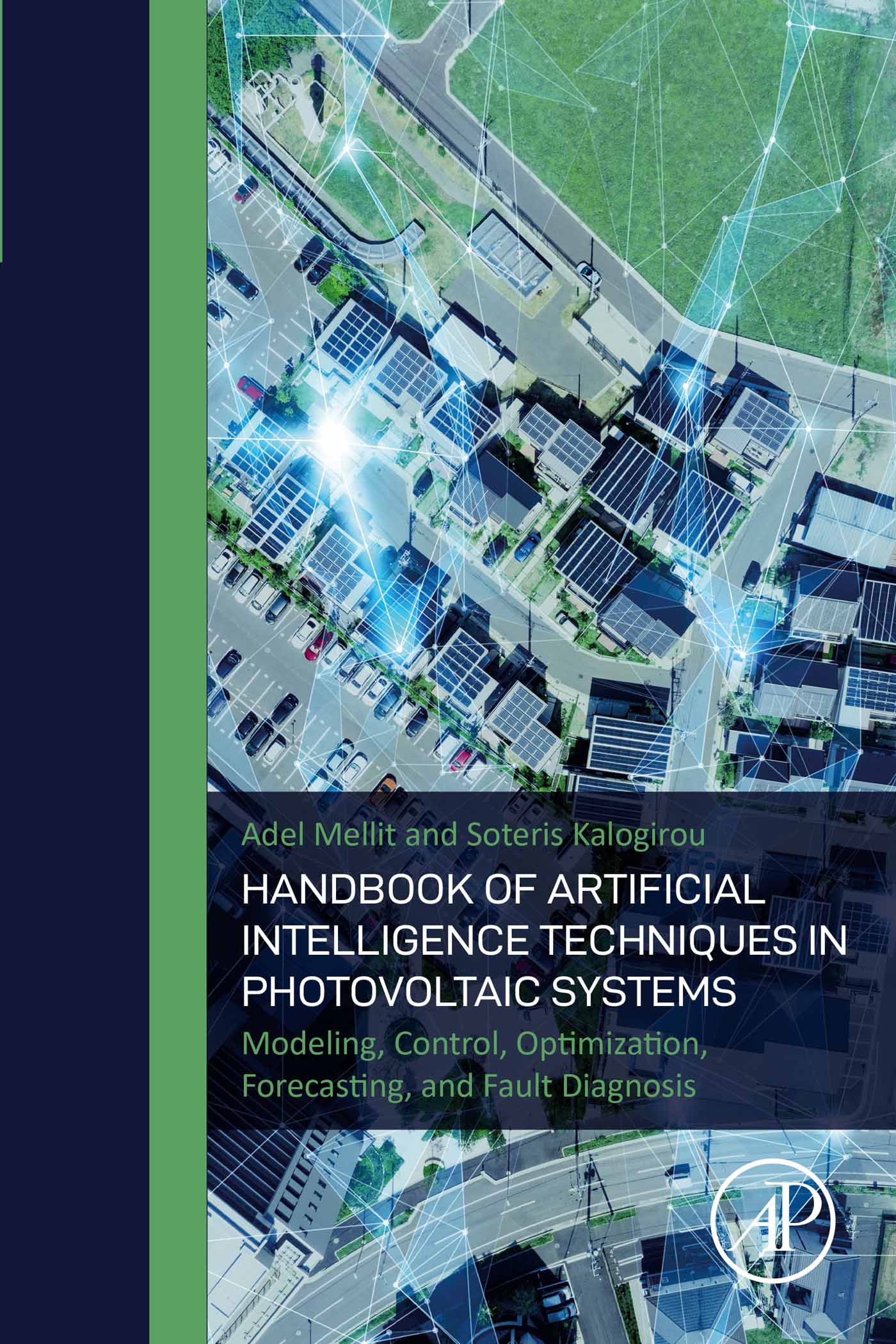Copyright
Academic Press is an imprint of Elsevier
125 London Wall, London EC2Y 5AS, United Kingdom
525 B Street, Suite 1650, San Diego, CA 92101, United States
50 Hampshire Street, 5th Floor, Cambridge, MA 02139, United States
The Boulevard, Langford Lane, Kidlington, Oxford OX5 1GB, United Kingdom
Copyright 2022 Elsevier Ltd. All rights reserved.
MATLABs is a trademark of The MathWorks, Inc. and is used with permission. The MathWorks does not warrant the accuracy of the text or exercises in this book. This books use or discussion of MATLABs software or related products does not constitute endorsement or sponsorship by The MathWorks of a particular pedagogical approach or particular use of the MATLABs software.
No part of this publication may be reproduced or transmitted in any form or by any means, electronic or mechanical, including photocopying, recording, or any information storage and retrieval system, without permission in writing from the publisher. Details on how to seek permission, further information about the Publishers permissions policies and our arrangements with organizations such as the Copyright Clearance Center and the Copyright Licensing Agency, can be found at our website: www.elsevier.com/permissions.
This book and the individual contributions contained in it are protected under copyright by the Publisher (other than as may be noted herein).
Notices
Knowledge and best practice in this field are constantly changing. As new research and experience broaden our understanding, changes in research methods, professional practices, or medical treatment may become necessary.
Practitioners and researchers must always rely on their own experience and knowledge in evaluating and using any information, methods, compounds, or experiments described herein. In using such information or methods they should be mindful of their own safety and the safety of others, including parties for whom they have a professional responsibility.
To the fullest extent of the law, neither the Publisher nor the authors, contributors, or editors, assume any liability for any injury and/or damage to persons or property as a matter of products liability, negligence or otherwise, or from any use or operation of any methods, products, instructions, or ideas contained in the material herein.
ISBN: 978-0-12-820641-6
For information on all Academic Press publications visit our website at https://www.elsevier.com/books-and-journals

Publisher: Charlotte Cockle
Acquisitions Editor: Edward Payne
Editorial Project Manager: Aleksandra Packowska
Production Project Manager: Anitha Sivaraj
Cover Designer: Christian J. Bilbow
Typeset by STRAIVE, India
Authors biographies
Adel Mellit is Professor at the Faculty of Sciences and Technology, Jijel University, Algeria. He received his MS and PhD in electronics from the University of Sciences and Technology Houari Boumediene (USTHB), Algiers in 2002 and 2006, respectively. His research interests focus on the application of artificial intelligence techniques in photovoltaic systems and microgrids (control, fault diagnosis, optimization, and real-time applications). Dr. Adel Mellit has authored or coauthored more than 150 papers in international peer-reviewed journals (mostly with Elsevier), papers in conference proceedings (mostly with the IEEE) mainly on photovoltaic systems, six book chapters, and two books. He is the director of the Renewable Energy Laboratory at the Jijel University, Algeria, and is an associate member at the ICTP Trieste, Italy. He is serving on the editorial board of the Renewable Energy and is Editor of the IEEE Journal of Photovoltaic and of Energy (Elsevier Ltd). https://orcid.org/0000-0001-5458-3502.
Soteris Kalogirou is Professor at the Department of Mechanical Engineering and Materials Sciences and Engineering of the Cyprus University of Technology, Limassol, Cyprus. He is currently the Dean of the School of Engineering and Technology. In addition to PhD, he holds the title of DSc. He is a fellow of the European Academy of Sciences and a founding member of the Cyprus Academy of Sciences, Letters, and Arts. For more than 35 years, he is actively involved in research in the area of solar energy. He is also involved in research related to the use of artificial intelligence for the modeling, performance prediction, and fault finding of renewable energy systems. He has a large number of publications in books, book chapters, international scientific journals, and refereed conference proceedings. He is the editor-in-chief of Renewable Energy and deputy editor-in-chief of Energy. He is the editor of the book Artificial Intelligence in Energy and Renewable Energy Systems, published by Nova Science Inc.; the coeditor of the book Soft Computing in Green and Renewable Energy Systems, published by Springer; the editor of the book McEvoys Handbook of Photovoltaics, published by Academic Press of Elsevier; and the author of the books Solar Energy Engineering: Processes and Systems and Thermal Solar Desalination: Methods and Systems, published by Academic Press of Elsevier. https://orcid.org/0000-0002-4497-0602.
Preface
This book is the result of many years of collaboration between two researchers in the field of artificial intelligence (AI) techniques and solar energy systems. The idea behind writing the book is to give to readers the first book on the application of AI techniques, including machine learning, and deep learning in photovoltaic systems.
Recently, the use and the application of AI techniques in renewable energy systems (RESs) have increased considerably, showing substantial advances in solving some complex problems. However, in some cases, the application of AI techniques is considered a magic solution by some researchers, which is not correct. Therefore, the main objective of writing this book is to demonstrate to the readers a comprehensive way and detailed methods on how, when, and why to use and apply AI techniques in solving various photovoltaic problems, including solar radiation forecasting, optimization and management, control and maximization of output power, fault diagnosis, power forecasting, power sharing, and smart monitoring systems using the Internet of things (IoT) technique.
The book provides readers with a comprehensive overview of the application of AI techniques in photovoltaic systems. We believe that this comprehensive illustration of the AI techniques and their application in photovoltaic systems will be a valuable key guidance for scientists, researchers, and industry sectors working in this area, to apply these techniques effectively. The book can also be used as advanced background reading by students who are studying postgraduate courses and who are motivated and interested in the application of AI techniques in photovoltaics. In addition, readers will be able to get an idea about different photovoltaic configurations, including grid-connected, hybrid, and micro-grids. Understating the main challenging issues in the implementation of AI in photovoltaic applications is another objective.
The most valuable features and content in the book are (1) understanding how to apply AI techniques; (2) showing the advantages of AI to solve some challenging problems in photovoltaics (autonomous, grid-connected, hybrid, and micro-grids), such as fault detection, identification, and localization of faults; advanced management and control process; output power forecasting; and smart monitoring systems; (3) showing the most important aspects for the implementation of intelligent methods in real time using some reconfigurable circuits such as field programmable gate arrays (FPGAs), microcontrollers (Arduino), and Minco-processor (Raspberry); and (4) designing smart prototypes based on embedded technologies.


